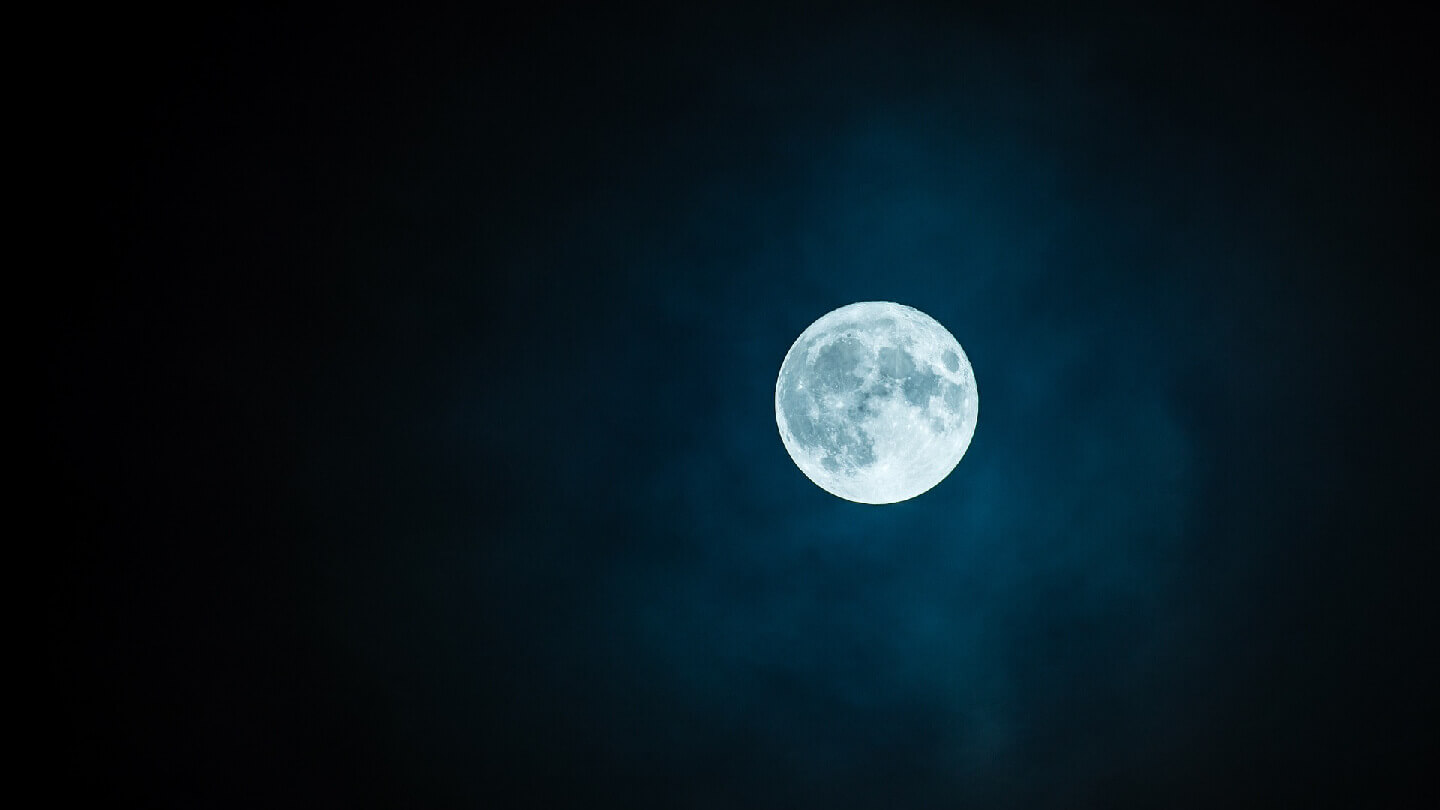Typically, the parashot (weekly Torah portions) Vayakhel and Pekudei are combined together into a single reading. Occasionally, like this year, however, they are separated, because it’s a Hebrew leap year. Unlike the civil Gregorian calendar that adds February 29th once every four years (except in years divisible by 100 but not by 400), a leap year in the Hebrew calendar adds a thirteenth month to keep the calendar aligned with the seasons.
The Scriptures command us to celebrate Passover in the spring at the time of the ripening of the barley, so the Jewish calendar has to be a solar calendar. But in another place, it also commands us to remember the new moon days, so the Jewish calendar has to be a lunar calendar.

However, 12 lunar cycles are shorter than the solar year by about 11 days (as in the Muslim calendar, for example), and the Gregorian solar calendar is not aligned with the new moons. Even though the lunar year and the solar year aren’t synchronized, the Hebrew calendar builds on the cycles of the moon while occasionally adding an additional intercalary month (according to a fixed 19-year cycle) to catch up to the appropriate season of the solar year.
That way, if Passover is coming, but it’s still winter, then an additional month called Adar II is inserted before Adar I, and returns Aviv and Passover to the spring time.
The Torah reading cycle is for an entire year, but of course if a whole additional month is inserted into the year, then four additional readings need to come from somewhere. For this, some Torah readings that are combined in a regular year will be separated in a leap year in order to schedule portions to read each week of the added month.
There are 54 Torah portions in total, and automatically a handful of any year’s Shabbat readings will be replaced by holiday readings. So in a regular year, 14 pairs of Torah portions are read together as double portions, and in the case of an intercalary year, four of those pairs are split up (Vayakhel-Pekudei, Tazria-Metzora, Acharei Mot-Kedoshim, Behar–Bechukotai). That is the reason why Pekudei is separate from Vayakhel this year.
The lunisolar Hillel II calendar is actually a brilliant invention that filled a desperate need. Originally, the new moons were formerly sighted by multiple witnesses and officially declared throughout Israel. But after the Second Temple destruction and the subsequent dispersion, it was impractical to declare the new moon to every Jewish community in the world, and under Constantius II, it was actually outlawed.
As a remedy, the Sanhedrin instituted the Hillel II calendar in 359 AD/CE. In one sense it preserved uniformity among Jewish people abroad, but in another way it severed ties between Israel and the Diaspora.
The calendar itself, in general, is quite accurate, averaging 29.5 days per month and 365.2468 days per year (compared to the average solar year length of 365.2422). It allows for adding and subtracting a day in consecutive years as needed, so as to avoid waving the lulav on Shabbat, or landing Yom Kippur adjacent to a Shabbat.
Implementing the Hillel II calendar was the Sanhedrin’s last big decision before disbanding. Whenever the Hillel II calendar will be decommissioned in the future to return to sighting and declaring the New Moon days, it would have to be at the authority of a reconvened Sanhedrin.
So until then, this calendar is what unites Jewish people worldwide in celebrating the holidays on the same days, and reading the same Torah portion together each week.


Thank you very much for this great article! Greetings from Venezuela, we live in times of terror in our country, Pray please for us.
With God’s favor we will soon be Israel’s allies again!
Thank you for the kind words Alexandar.
We pray things will improve in Venezuela!
Greetings
Can you tell me please,if the Romans forced Israel to stop keeping the Lunar /solar Calender(and when) and keep A re-occuring Saturday Sabbath.
The Genesis account of Noahs flood indicates 30 day months.I presume the approximately 29.5 moon cycles we have today,started soon after the flood ended?I wonder if the Creators solar years were originally exactly 360 days long,to make it simply 12× 30=360 day,years?
What do you think?
Kind regards Michael
None of that has any biblical basis but it is a very interesting idea.
blessings
*edit: regarding your first question: The Roman catholic church forbade for hundreds of years jewish practice, expelling jews and killing all who stay and follow any kind of jewish practice. Even though there were many forced expulsions and persecutions long before that time by the Roman empire before it’s fall.
If you don’t mind, I posted your article on my FB to my friends (mostly Messianic). As an introduction to your post, I included: “Note from Fred: This is an interesting article for those wanting to know more about the Jewish calendar. Preceding the Hillel II declaration, there was a kind of rivalry between intercalating (determining a kosher calendar) from Jerusalem or Babylon. The quote “from Zion shall go forth the Law” won out for Jerusalem being the source of intercalating, as delegations went to and fro. However, things changed in the dawn of the 4th century as is evident in the Hillel II decision.”
Thank you so much, Fred, we are glad you decided to share it and enrich others.
Blessings.
I need more information about the Jewish calendar. Can you help me with this. Thanks
Feel free to read our articles on the weekly Torah portions. God bless! https://netivyah.org/blog/
Thank you for your article, I have been trying to find the answer to this question I was asked, “Where in the Talmud is the part about following the Hillel calendar?”
This has led me to many interesting articles including yours – can you help me – does the Talmud actually say we are to follow the Hillel calendar? I am finding so many interesting things but I just don’t seem to find the answer.
Hi Lisa, While there is “description” of how the calendar worked in Talmudic Times (Sanh. 10b-12b), you will not find “prescription” in the Talmud because of how the transition worked. Before the Temple destruction, all calendrical phenomena were sighted and reported. At the writing of the Talmud, these events were both sighted and calculated. In only post-Talmudic times was the calendar entirely calculated. The Jewish Encyclopedia reports all of the authors that have written on the Calendar: Baraita of the secret of intercalation in Rosh. Hashana. 20.2; Pirḳe de Rabbi Eliezer ha-Gadol b. Hyrcanus; Mashallah, 754-813; Sahl ben Rabban al-Ṭabari, 800; Sind ben Ali, 829-832; Shabbethai b. Abraham Donolo, 949; Ḥasan, judge of Cordova, 972; Abraham b. Ḥiyya, d. 1136; Abraham ibn Ezra, 1093-1168; Isaac b. Joseph Israeli, 1310; Immanuel b. Jacob of Tarrascon, 1330-1346; Elia Misraḥi, d. 1490; Abraham b. Samuel Zacuto, professor of astronomy at Saragossa, 1492, Moses Isserles, d. 1573; David Gans (d. 1613), a friend of Keppler and Tycho Brahe; Raphael Levi Hannover, 1734; Israel Lyons, 1773, member of an English polar expedition.
Toda Rabá, amo os seus posts. Realmente os Judeus discípulos de Yeshua são luz para as nações.
Sou do Brazil e daqui acompanhamos vocês e a Har Tzion dos Rabinos Matheus e Marcelo.
Compartilho sempre e os indico pois há muitos com sede da Palavra. Shalom e Mazal Tov!!!
Will Israel return to the original calendar to prepare for Messiah or will he bring it back?
Jared, I wish I could find you making the rounds on various video interviews and podcasts.
maaf saya hanya ingin bertanya jika bisa di jawab, apakah kalender yahudi ketika hillel II ini di jalankan masih tetap seperti yang dulu atau adakah perubahan misalnya pergeseran hari ibadah sabat. terima kasih
Shalom Shalom Baruch Hashem.
Sou de Juíz de Fora Minas Gerais Brasil.
Tenho um sonho de ter acesso aos comentários Rabinicos antigos.
Onde encontrar?
Sobre o Calendário Lunar se puderem compartilhar mais esclarecimentos nos ajudará a entender melhor. Obrigado e Parabéns em nome de Yeshua.
The Sanhedrin was dissolved in 70 CE and the Hillel II calendar was created by Hillel II in 359 CE. I can see the benefit of the Hillel II calendar created pre-internet to unify the dispersed Jewish community. Now that we have the internet connecting us instantly to reputable watchmen and witnesses sighting the moon in Israel, why do we need to wait for the Sanhedrin to be reestablished to do what the Scriptures say?
Shalom, and thanks for the article!
Shalom Travis!
Thank you for sharing your thoughts!
While the Sanhedrin stopped convening in Jerusalem in 70 CE, it did continue until it was disbanded in the year 425 CE, and this calendar was officially instituted by the Sanhedrin and it is quite accurate.
Could you clarify what exactly you mean when you say “to do what scripture says” and how this relates to the calendar?
Blessings